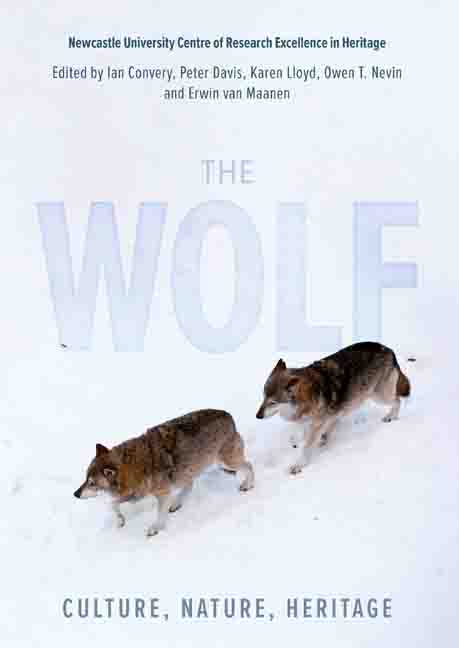Book contents
- Frontmatter
- Dedication
- Contents
- List of Illustrations
- Preface and Acknowledgments
- List of Abbreviations
- Poem: Trophic Cascade by Camille T Dungy
- Foreword
- Part I Imagining the Wolf
- Part II What Makes the Wolf
- Part III Return of the Wolf
- Part IV Personal Encounters
- Afterword: The Ecological Disadvantage of Living on an Island
- Glossary
- List of Contributors
- Index
9 - Defined ‘as much by their absence as their iconography’: Reimagining Wolves in Cumbria in Sarah Hall’s The Wolf Border
Published online by Cambridge University Press: 10 January 2024
- Frontmatter
- Dedication
- Contents
- List of Illustrations
- Preface and Acknowledgments
- List of Abbreviations
- Poem: Trophic Cascade by Camille T Dungy
- Foreword
- Part I Imagining the Wolf
- Part II What Makes the Wolf
- Part III Return of the Wolf
- Part IV Personal Encounters
- Afterword: The Ecological Disadvantage of Living on an Island
- Glossary
- List of Contributors
- Index
Summary
Along with the snake or serpent, the wolf is one of the most culturally demonised creatures in Western society. Within the Bible and the canons of English literature the wolf is used repeatedly as a symbol of violent predatory destruction but also to suggest vicious cunning. This cultural representation is perhaps most powerfully reinforced in fairy tales and, in particular, by the tale of Little Red Riding Hood which, as Zipes (1993) has shown, became itself an influential cultural myth, being rewritten multiple times in many different contexts. It is notable that even within one of the most radical of these rewritings – in which we see a revisionary empowerment of ‘Red’ entering into a ‘savage marriage ceremony’ with the wolf – the story reaffirms key aspects of wolf mythology: ‘The wolf is carnivore incarnate and he's as cunning as he is ferocious; once he's had a taste of flesh, then nothing else will do … They are grey as famine, they are unkind as plague’ (Carter 1979, 118; 110–11). Given this legacy of wolf demonisation, especially within European cultural contexts, Sarah Hall tackles a doubly controversial topic in her 2015 novel, The Wolf Border: not merely the fraught and divisive question of rewilding within the Lake District National Park, but the reintroduction of one of the most feared of apex predators, an animal which has been ‘hunted with every age's weapon, stone axe, spear, sprung-steel trap, and semi-automatic’ (Hall 2015, 7). In its fictional engagement with a wolf reintroduction programme, Hall's novel must therefore negotiate with powerful myths relating to both the wolf and the ideologically complex landscape of the English Lake District.
Proposals to reintroduce a small pack of wolves in Scotland in 2010 foregrounded the notion of the wolf as an agent of rewilding in a UK context. Hall makes reference to the debates which resulted from these proposals in a 2015 interview, describing studies which suggest ‘Scotland would be good for three wolf packs’ and noting that she would like to see this happen (Hall cited in Vasishta 2015).
- Type
- Chapter
- Information
- The WolfCulture, Nature, Heritage, pp. 99 - 106Publisher: Boydell & BrewerPrint publication year: 2023



